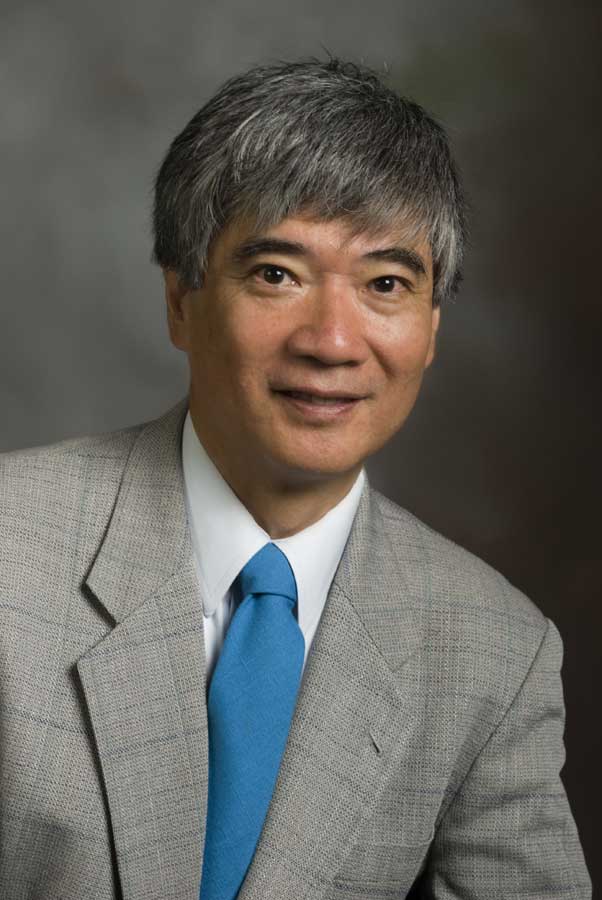Engineering professor Ted Oyama receives Humboldt Foundation Award

S. Ted Oyama, who holds the Fred W. Bull Professorship of Chemical Engineering at Virginia Tech, has received a Humboldt Research Award from the Alexander Humboldt Foundation of Germany.
Oyama, who came to Virginia Tech in 1993, is considered to be a world leader in research in heterogeneous catalysis and inorganic membranes. Oyama has published extensively in the synthesis and characterization of these materials. His discoveries have led to 10 composition-of-matter patents and license agreements to various companies.
The Humboldt Award is available annually to no more than 100 scientists and scholars, internationally renowned in their fields. The award is granted in recognition of a researcher’s lifetime achievements to date. To receive a Humboldt, one must have made fundamental discoveries, contributed new theories, or insights that have had a significant impact on their own discipline and who are expected to continue producing cutting-edge achievements.
Oyama’s work combines fundamental studies with practical applications in the environmental field. He specializes in the application of in situ spectroscopic techniques for the understanding of the mechanisms of catalytic reactions at the molecular level. He has also discovered new inorganic membranes with unprecedented permeance and selectivity for the separation of gases such as hydrogen, and applied them in units that combine reaction and separation to overcome thermodynamic constraints in yields.
Oyama currently works in three areas of importance to environmental problems: the use of strong oxidants for pollutant remediation and the synthesis of high-value products; the development of novel catalysts for the upgrading of petroleum resources; and the development of advanced membranes for the selective separation of gases.
In the first area, Oyama has demonstrated that strong oxidants are valuable reagents in catalytic transformations. For example, volatile organic compounds, otherwise known as VOCs, are present in ventilation air at low, but harmful at concentrated levels and are removed by costly absorption or incineration methods. Oyama pioneered the use of ozone to effectively remove these contaminants at ambient conditions because of its strong oxidizing power.
He also uncovered the molecular mechanism for its action using Raman spectroscopy. Hydrogen peroxide is another strong oxidant and it is used for the selective functionalization of hydrocarbons to valuable products. Oyama was the first to conclusively demonstrate that hydroperoxides were the key intermediates in the reaction to produce epoxides using ultra-violet visible and X-ray absorption spectroscopies. He invented a class of catalysts consisting of oxides with designed pore architecture for the transformation.
In the second area, Oyama has worked in the cleanup of petroleum feedstocks, and has developed a new class of materials that have higher activity than commercial catalysts. The efficient removal of impurities such as sulfur and nitrogen from petroleum feeds allows the production of clean fuels and helps meet the strict mandates of the Clean Air Act. “This is probably the most important current problem in refining because petroleum sources are becoming scarce and more polluted and there is need to replace the current generation of catalysts,” Oyama said. He has elucidated the atomic structure of the catalytic site of the most active of these new-generation catalysts using X-ray absorption spectroscopy.
In the third area, Oyama has worked in the development of new membranes for the separation of gases such as hydrogen and carbon dioxide. These will allow lower cost production of energy and the elimination of greenhouse gases. The membranes are novel inorganic materials and have excellent properties such as the ability to pass gases at high rates, the ability to differentiate between gases of close properties, and tolerance to harsh conditions such as high temperature and pressure. The membranes discovered by Oyama were completely different from previously described membranes. “An important achievement was the development of a molecular theory to explain their novel behavior,” he said.
Oyama has received three significant honors in 2007. He was named a Japan Society for the Promotion of Science Scholar, a fellowship award that allowed him to carry out research at the top national laboratory in Japan, the National Institute for Advanced Industrial Science and Technology. He also received the Most Cited Author Award for 2002-2006 from Elsevier for a paper published in 2003 on novel catalysts. Third, he was named editor at the Journal of Catalysis, the top journal of its field, and the first-ranked among all 110 chemical engineering journals by the Institute for Scientific Information.
Oyama has more than 180 scientific papers in refereed journals and 320 presentations. He has written an original research monograph on the control of volatile organic compounds, and edited six reference volumes on catalysis. The journals he publishes in are consistently the best in the field: the Journal of Catalysis and the Journal of Membrane Science are the flagship journals of their respective areas, the Journal of Physical Chemistry and Advanced Materials are top journals in chemistry. Statistics from the Institute for Scientific Information Citation Index indicate 23 citations per paper and an h-index of 30.
As a Humboldt Award recipient, Oyama is invited to spend a period of up to one year cooperating on a long-term research project with specialist colleagues at a research institution in Germany. Oyama has some fluency in German and hopes to increase his connections to the language and culture of the country.



.jpg.transform/m-medium/image.jpg)
